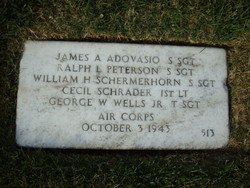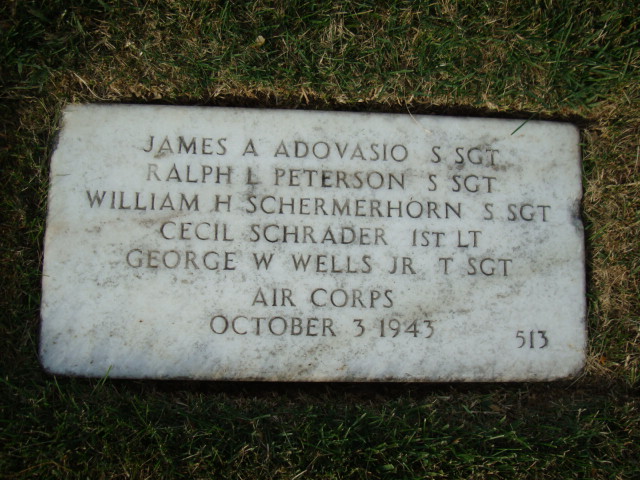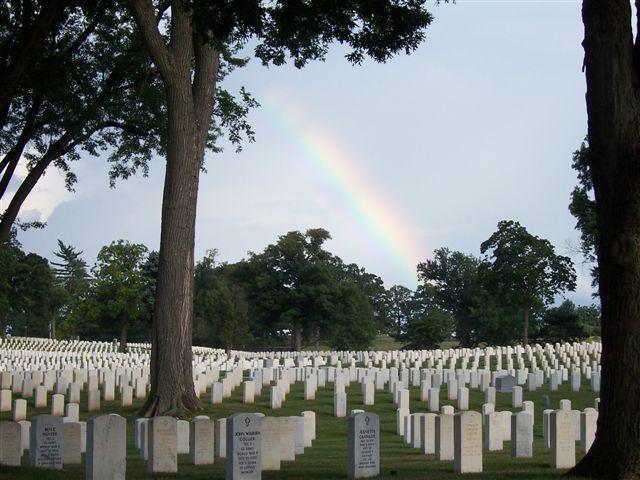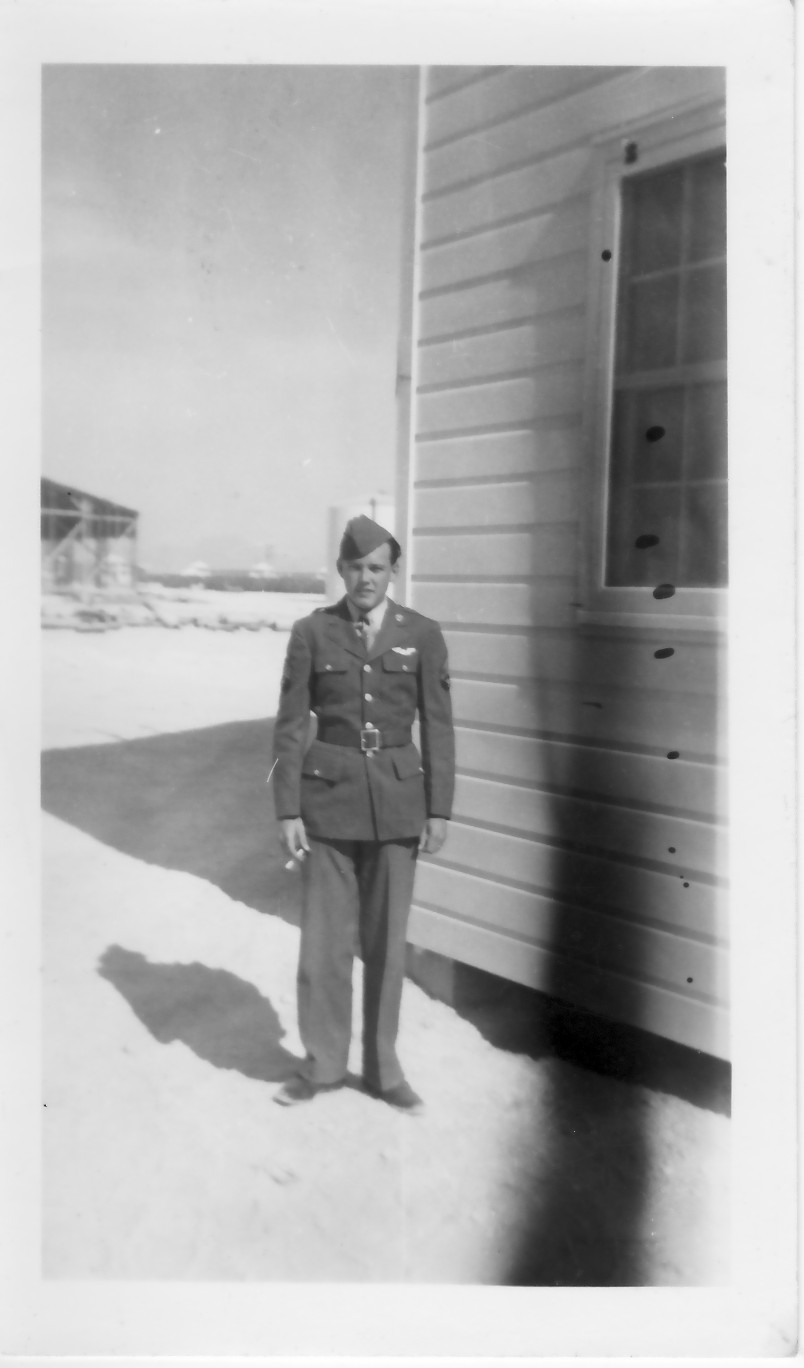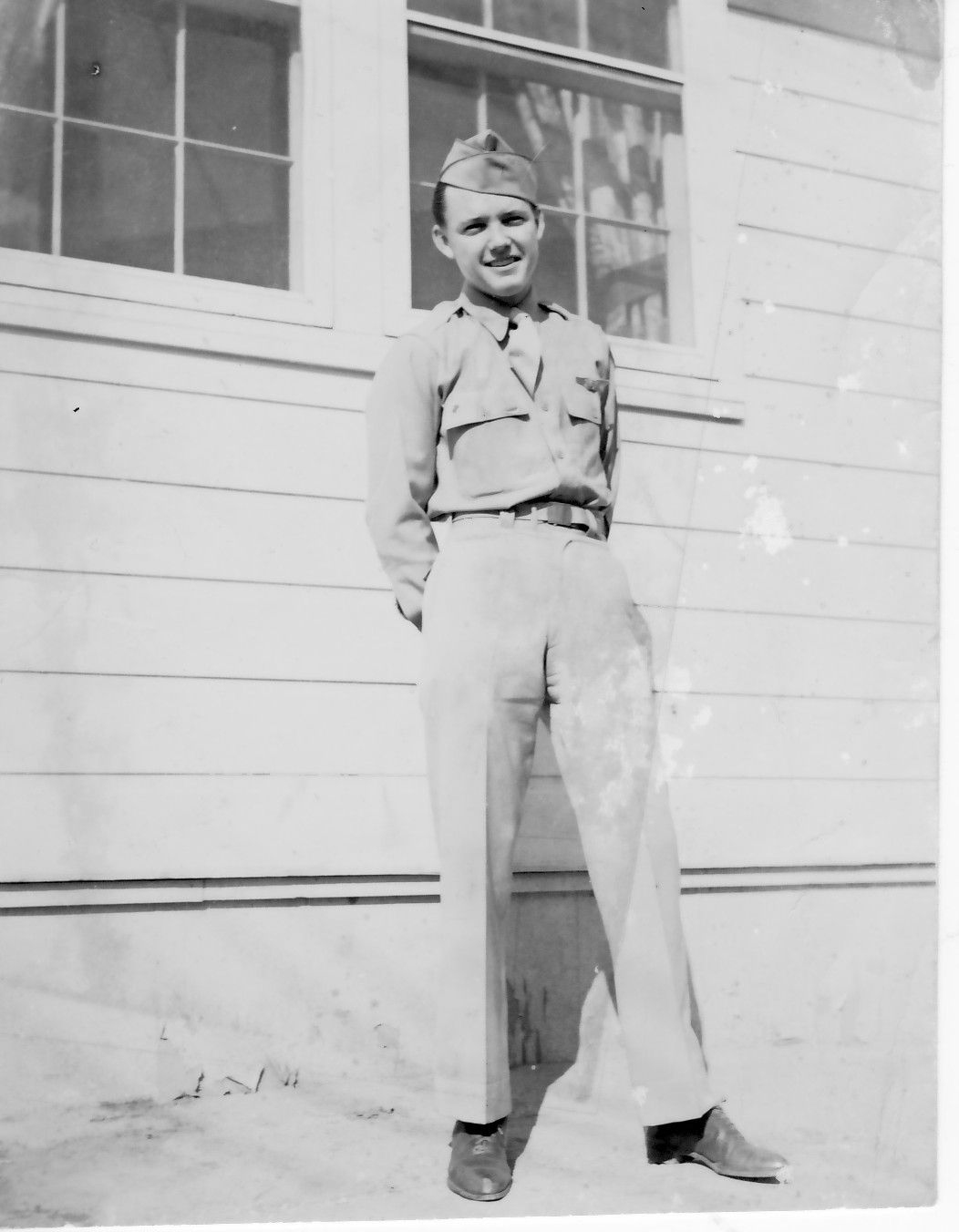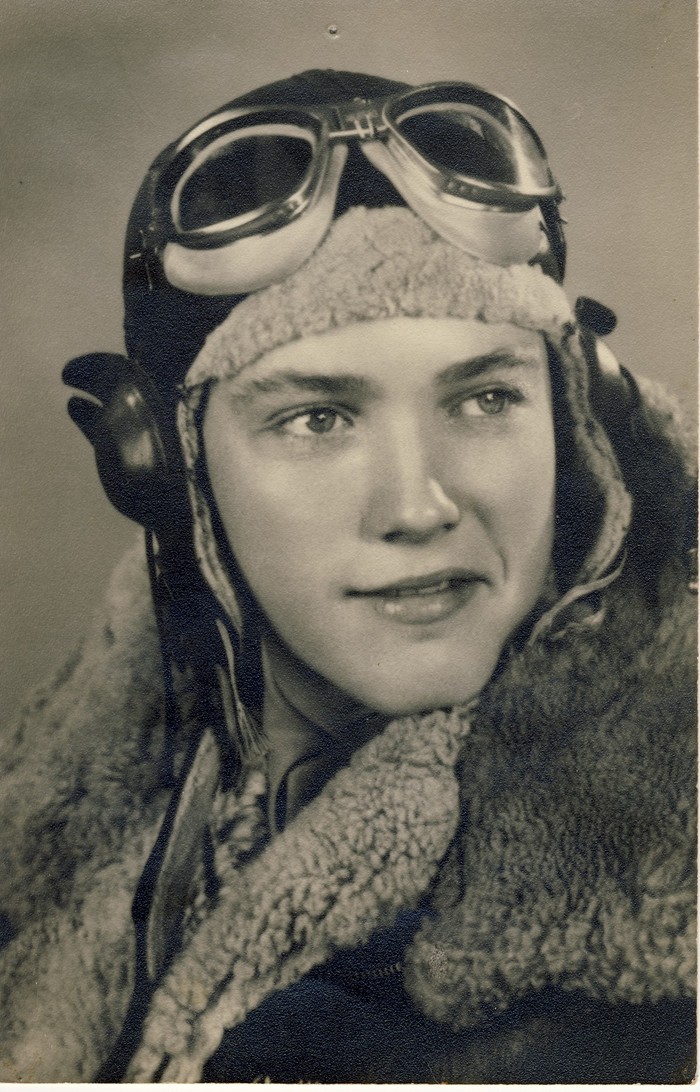Training for his Army Air Corps B-24 "Liberator" crew began at Biggs Field, Tx., Lowery Field, Co. and finished up in Lincoln Ne. He was in the Fowble crew named after their leader, Capt. Ed Fowble. This original fighting crew trained as a group of ten men and was one of the original crews of the 564th Squadron, 389th Bomb Group in December, 1942. Their route overseas took them through Maine, Goose Bay, Labrador, and Reykjavik, Iceland to their new base at Hethel, Norwich, Norfolk, England. After additional training in England they were assigned to battle duty in the North African campaign at Bengasi, Libya where they assisted the 9th Air Force. Mr. Wells was assigned to be the radio operator, photographer, and waist gunner.
His first mission was the very first one flown by the 389th Bomb Group. They bombed a German Airfield at Meleme on the island of Crete. Other missions built up to a climax where the group flew in the daring "Ploesti Raids" on the Romanian oil refineries. Ploesti provided nearly a third of the petrol that fueled Hitler's tanks, battleships, submarines, and aircraft. This target was the largest and most important of all the vital oil installations and was very heavily protected and well defended. After the Polesti mission they bombed targets in both Italy and Austria. On the evening of June 25, 1943 the crew was in Seething England conducting formation training and there was an accident. B-24 #42-40774 piloted by Capt. Harold James collided mid-air with George's plane and was badly damaged. James's bird was forced to make a hard emergency landing and one man, 2nd Lt. Charles Quantrell was killed. Back and forth from Africa on August 27th they returned to England where they flew missions over France. September 16th, 1943 they were again ordered back to Africa. After a stop in Marrakech, Moroco they settled in Tunisia. From here they joined the allied offensive in Italy, Corsica, and on the beach head at Salerno. Their last mission was the bombing of the German Messerschmitt plant at Wiener Neustadt, Austria. The anti aircraft fire was intense and the Fowble crew took many hits some of which punctured the fuel cells causing leaks and fires. Major Ardery described George as "very cool headed, even at one time the whole right side wing was in flames and George was calmly taking photos of the bombing run and the plane in flames." The following day, all the crews were headed back to England. The "I for Item" crew was the last to leave because they were endeavoring to stem the fuel leaks from the prior mission. The facilities in Tunisia were inadaquate for the repairs they needed and Capt. Fowble decided to try to get the plane to Maarakech where proper repairs could be made. They made it to within site of the base. At three miles out in the middle of the night they ran out of fuel, crashed and burned. They had fifteen men on board. Twelve died in the crash, three men were badly injured, two of which later died. One man survived. The crew was buried in North Africa and later most were reburied at Jefferson Barracks, Mo. He is resting with crew members James A. Adovasio, Ralph L. Peterson, William H. Schermerhorn, and Cecil Schrader.
George was awarded the Distinguished Flying Cross and the Air Metal. His name is located on the Roll of Honor at the Memorial Library at Norwich, Norfolk, England. George is survived by his son George W. Wells III, Grandchildren Valerie Wells Cooper, Mitchell Saxon Wells, Great Grandchildren Hannah Cooper, Jackson Cooper, Hanna Wells, Haley Wells, Drake Wells, and another George, George Walton Wells IV. his name sake. There are many thousands of stories and lives that end this way in war. Always remember, FREEDOM IS NOT FREE. George Wells Jr. made the ultimate sacrifice for our country and will always be a hero.
Training for his Army Air Corps B-24 "Liberator" crew began at Biggs Field, Tx., Lowery Field, Co. and finished up in Lincoln Ne. He was in the Fowble crew named after their leader, Capt. Ed Fowble. This original fighting crew trained as a group of ten men and was one of the original crews of the 564th Squadron, 389th Bomb Group in December, 1942. Their route overseas took them through Maine, Goose Bay, Labrador, and Reykjavik, Iceland to their new base at Hethel, Norwich, Norfolk, England. After additional training in England they were assigned to battle duty in the North African campaign at Bengasi, Libya where they assisted the 9th Air Force. Mr. Wells was assigned to be the radio operator, photographer, and waist gunner.
His first mission was the very first one flown by the 389th Bomb Group. They bombed a German Airfield at Meleme on the island of Crete. Other missions built up to a climax where the group flew in the daring "Ploesti Raids" on the Romanian oil refineries. Ploesti provided nearly a third of the petrol that fueled Hitler's tanks, battleships, submarines, and aircraft. This target was the largest and most important of all the vital oil installations and was very heavily protected and well defended. After the Polesti mission they bombed targets in both Italy and Austria. On the evening of June 25, 1943 the crew was in Seething England conducting formation training and there was an accident. B-24 #42-40774 piloted by Capt. Harold James collided mid-air with George's plane and was badly damaged. James's bird was forced to make a hard emergency landing and one man, 2nd Lt. Charles Quantrell was killed. Back and forth from Africa on August 27th they returned to England where they flew missions over France. September 16th, 1943 they were again ordered back to Africa. After a stop in Marrakech, Moroco they settled in Tunisia. From here they joined the allied offensive in Italy, Corsica, and on the beach head at Salerno. Their last mission was the bombing of the German Messerschmitt plant at Wiener Neustadt, Austria. The anti aircraft fire was intense and the Fowble crew took many hits some of which punctured the fuel cells causing leaks and fires. Major Ardery described George as "very cool headed, even at one time the whole right side wing was in flames and George was calmly taking photos of the bombing run and the plane in flames." The following day, all the crews were headed back to England. The "I for Item" crew was the last to leave because they were endeavoring to stem the fuel leaks from the prior mission. The facilities in Tunisia were inadaquate for the repairs they needed and Capt. Fowble decided to try to get the plane to Maarakech where proper repairs could be made. They made it to within site of the base. At three miles out in the middle of the night they ran out of fuel, crashed and burned. They had fifteen men on board. Twelve died in the crash, three men were badly injured, two of which later died. One man survived. The crew was buried in North Africa and later most were reburied at Jefferson Barracks, Mo. He is resting with crew members James A. Adovasio, Ralph L. Peterson, William H. Schermerhorn, and Cecil Schrader.
George was awarded the Distinguished Flying Cross and the Air Metal. His name is located on the Roll of Honor at the Memorial Library at Norwich, Norfolk, England. George is survived by his son George W. Wells III, Grandchildren Valerie Wells Cooper, Mitchell Saxon Wells, Great Grandchildren Hannah Cooper, Jackson Cooper, Hanna Wells, Haley Wells, Drake Wells, and another George, George Walton Wells IV. his name sake. There are many thousands of stories and lives that end this way in war. Always remember, FREEDOM IS NOT FREE. George Wells Jr. made the ultimate sacrifice for our country and will always be a hero.
Inscription
TSGT, US ARMY AIR FORCES WORLD WAR II
